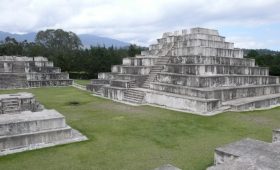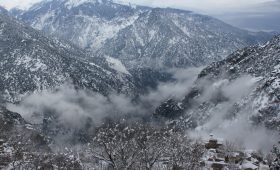Laguna de Urao: A Unique Natural Wonder in Venezuela
About Laguna de Urao
Laguna de Urao, also known as Yamuén, is a natural saltwater lake located in Lagunillas, Mérida, Venezuela. This tectonic lake is renowned for its historical and ecological significance. The lake’s name comes from the mineral “Urao” (sodium sesquicarbonate), which is formed by the concentration of salts from underground water and sediments. This mineral was historically significant to the indigenous people, who used it to produce chimó, a traditional tobacco product.
Getting There
To reach Laguna de Urao, fly into Caracas, Venezuela’s capital. From there, travel to Mérida state, specifically the town of Lagunillas. Renting a car or taking a bus are viable options. Once in Lagunillas, the lake is accessible, and local guides can offer insights into its history and ecology.
Best Time to Visit
The dry season, from December to April, is ideal for visiting Laguna de Urao. During this period, the weather is generally pleasant, and the skies are clear, providing excellent visibility of the surrounding semi-arid landscape. However, visiting during the rainy season, from May to November, offers a chance to see the region’s flora in full bloom, although it may be less convenient for outdoor activities.
Exploring Laguna de Urao
Hiking Trails
Explore the area around Laguna de Urao through various hiking trails. These trails vary in difficulty, catering to different fitness levels. As you hike, you’ll encounter unique flora and fauna, including colorful birds and exotic plants. The trails offer a chance to appreciate the lake’s semi-arid environment and its historical significance.
Local Culture
While visiting Laguna de Urao, immerse yourself in the local culture of Lagunillas. The town is home to friendly locals who take pride in their heritage. Explore vibrant markets where you can find traditional crafts and local cuisine. Engaging with the community provides a deeper understanding of the region’s history and traditions.
Historical Significance
Laguna de Urao holds a special place in Venezuelan history. It was declared a Natural Monument in 1979 due to its ecological and cultural importance. The lake was a vital resource for pre-Hispanic populations, who used its minerals for religious and practical purposes. Despite its historical significance, the lake has faced challenges, including threats to its existence, highlighting the need for conservation efforts.
Summary
- Laguna de Urao is a natural saltwater lake in Lagunillas, Mérida, Venezuela, known for its historical and ecological significance.
- The lake’s mineral, Urao, was historically used by indigenous people to produce chimó.
- The best time to visit is during the dry season (December to April) for clear weather and visibility.
- Travel involves flying into Caracas and then reaching Lagunillas by car or bus.
- Explore hiking trails and engage with the local culture in Lagunillas.
- The lake is a Natural Monument, reflecting its importance to Venezuela’s history and ecology.




